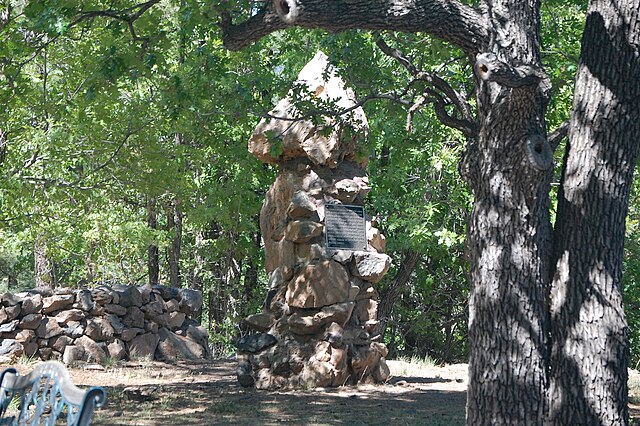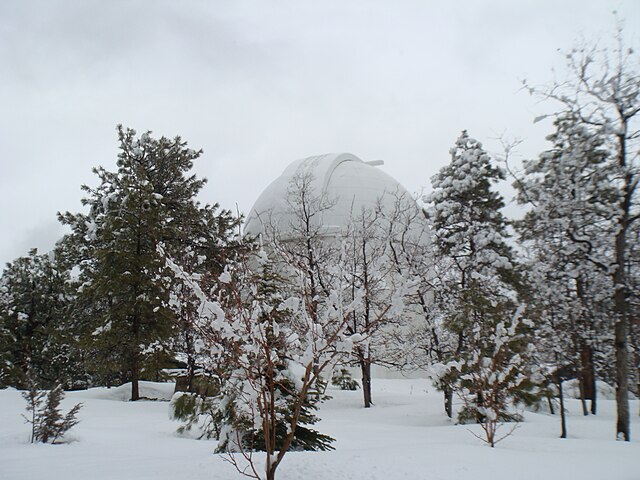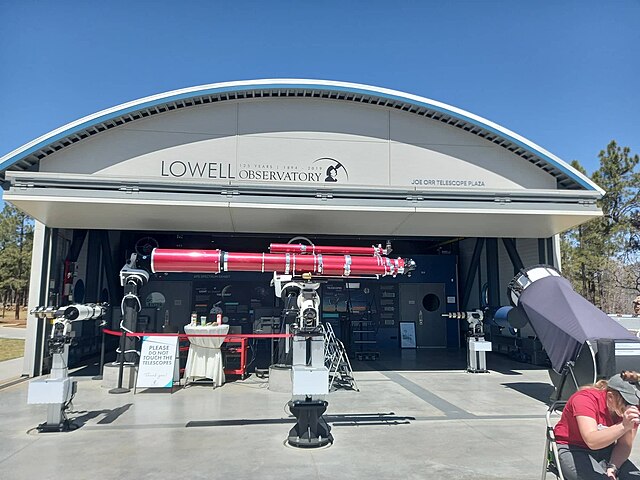Ever dreamed of gazing at the stars through a telescope that discovered a planet? Welcome to Lowell Observatory in Flagstaff, Arizona—a place where the cosmos feel close enough to touch. Founded in 1894, this historic gem isn’t just for astronomers; it’s a playground for anyone curious about the universe. From the telescope that spotted Pluto to a brand-new planetarium under Flagstaff’s famously dark skies, Lowell Observatory is a must-visit for 2025. Ready to embark on a stellar adventure? Let’s dive into why this spot should be on your travel list!
Why Lowell Observatory Stands Out
Lowell Observatory isn’t just another tourist stop—it’s a portal to the stars. Perched on Mars Hill, it’s been a beacon for astronomers and stargazers for over a century. Whether you’re a space nerd or just someone who loves a good view, the observatory’s mix of history, science, and jaw-dropping night skies makes it unforgettable. Plus, Flagstaff’s dark skies are some of the best in the world, making every visit feel like a private show with the universe. Can you imagine a better place to connect with the cosmos?
A Glimpse into Its Historic Roots
Founded by Percival Lowell, a wealthy Bostonian with a passion for Mars, the observatory has been pushing the boundaries of astronomy since 1894. Lowell thought he saw canals on Mars, sparking wild theories about Martian life. While those ideas didn’t pan out, his legacy led to the discovery of Pluto in 1930 by Clyde Tombaugh. Walking through Lowell’s campus feels like stepping into a time machine, where every telescope and exhibit tells a story of cosmic discovery. Isn’t it wild to think one man’s obsession with Mars built this?
Getting to Lowell Observatory
Getting to Lowell is as easy as chasing a shooting star. Located just a mile from downtown Flagstaff, it’s a quick drive or a scenic walk from the historic district. If you’re coming from Phoenix, it’s about a two-hour drive up I-17, with the Grand Canyon just an hour away for a perfect day trip combo. Public transit options are limited, so driving or ridesharing is your best bet. Pro tip: Arrive before sunset to catch both daytime exhibits and nighttime stargazing. Ready to hit the road?
Top Attractions at Lowell Observatory

Lowell Observatory is like a cosmic candy store—there’s something sweet for everyone. From historic telescopes to interactive exhibits, the campus is packed with ways to explore the universe. Let’s break down the must-see spots that’ll make your visit out of this world.
The Clark Telescope: A Window to History
The 24-inch Clark Telescope, installed in 1896, is like the observatory’s beating heart. This beauty was used by Percival Lowell to study Mars and later helped map the moon for the Apollo missions. You can peek through it during special tours, and trust me, seeing planets through this historic lens feels like shaking hands with the past. It’s not just a telescope—it’s a time capsule. How cool is it to look through the same glass that shaped space history?
Giovale Open Deck Observatory
The Giovale Open Deck Observatory is where the magic happens. Opened in 2019, this state-of-the-art plaza features six high-powered telescopes, including a 32-inch reflector that’ll make Saturn’s rings pop like a 3D movie. Day or night, you can gaze at planets, stars, and galaxies under Flagstaff’s pristine skies. The staff here are like cosmic tour guides, pointing out constellations with laser precision. Ever seen Jupiter’s moons up close? This is your chance.
Marley Foundation Astronomy Discovery Center
Brand new in 2024, the 40,000-square-foot Marley Foundation Astronomy Discovery Center is a game-changer. Think of it as a space-themed playground for all ages, with a rooftop open-air planetarium that uses Flagstaff’s dark skies as its canvas. The interactive exhibit hall is perfect for kids, while the 180-seat theater with its massive LED screen brings the universe to life. It’s like stepping into a sci-fi movie—except it’s real. Ready to lose yourself in the stars?
Stargazing and Night Programs
If there’s one thing Lowell Observatory does better than anyone, it’s stargazing. Flagstaff’s status as the world’s first International Dark Sky City means you’ll see stars like never before. The observatory’s night programs are a highlight, blending science talks, telescope viewing, and constellation tours. It’s like having a front-row seat to the universe’s greatest show. Who wouldn’t want to spend a night under a blanket of stars?
Constellation Tours
Ever struggled to spot the Big Dipper? Lowell’s constellation tours make it easy. Guides use powerful laser pointers to trace shapes in the sky, turning a jumble of stars into stories of gods, heroes, and animals. These tours are included with general admission and are perfect for beginners or seasoned stargazers. I still remember my first tour—seeing Orion’s Belt light up the sky felt like unlocking a cosmic puzzle. What constellation are you dying to find?
Dark Sky Planetarium
Forget stuffy planetariums with fake stars. The Dark Sky Planetarium at the Astronomy Discovery Center uses the real night sky, with heated seats to keep you cozy. Guides narrate live, pointing out planets and nebulae as meteors occasionally streak by. It’s like a campfire storytelling session, but the stories are written in the stars. Pro tip: Book the General Admission Plus ticket for early access. Doesn’t that sound like the coziest way to explore the cosmos?
Family-Friendly Activities
Lowell Observatory isn’t just for grown-up space geeks—it’s a blast for kids too. With hands-on exhibits and programs designed for young explorers, it’s a place where curiosity thrives. Let’s check out what makes this spot a family favorite.
Lowell Observatory Camps for Kids (LOCKs)

Since 2012, Lowell’s camps for kids (known as LOCKs) have been sparking young imaginations. From preschoolers to middle schoolers, these programs mix games, experiments, and art to teach STEM in a fun way. Picture your kid building a model rocket or learning why stars twinkle—it’s like summer camp in outer space. These camps sell out fast, so check the schedule early. What better way to inspire the next generation of astronomers?
Orbits Curiosity Zone
The Orbits Curiosity Zone in the Astronomy Discovery Center is a kid’s dream come true. This interactive exhibit lets little ones touch, play, and explore space science hands-on. From building mini planets to experimenting with light, it’s designed to make learning feel like an adventure. Parents, you’ll love watching your kids’ eyes light up as they discover the universe. Isn’t it amazing how a little play can ignite big dreams?
Special Events and Exhibits
Lowell Observatory keeps things fresh with events and exhibits that make every visit unique. Whether it’s a solar eclipse party or a new mural celebrating indigenous cosmology, there’s always something exciting happening. These events are like cosmic cherry on top of an already stellar experience.
Ring of Fire Eclipse Party
In October 2023, Lowell hosted a “Ring of Fire” annular solar eclipse event with solar telescopes, live talks, and refreshments. These kinds of events pop up regularly, often tied to celestial happenings like meteor showers or planetary alignments. Keep an eye on the observatory’s calendar for 2025 events—you might catch a Perseid meteor shower watch party or a talk by a visiting scientist. Who doesn’t love a party with the stars as guests?
Indigenous Cosmology Mural
Coming in 2025, the Indigenous Cosmology Mural will celebrate the region’s Native American tribes and their connection to the stars. Located on the Mars Hill campus, this exhibit honors the sacred history of the land while adding a cultural layer to your visit. It’s a reminder that astronomy isn’t just science—it’s storytelling across generations. How powerful is it to see the sky through different cultural lenses?
Practical Tips for Your Visit

Planning a trip to Lowell Observatory? Let’s make sure you’re ready for a smooth, starry experience. Here are some insider tips to help you make the most of your cosmic journey.
Best Time to Visit
Lowell is open year-round, but nighttime visits are the real showstopper. Summer evenings are warm and perfect for stargazing, while winter offers crisp, clear skies. Aim to arrive before sunset to explore daytime exhibits, then stay for telescope viewing. Check the weather—cloudy nights can limit stargazing. Pro tip: Weekdays are less crowded than weekends. When’s the last time you planned a night under the stars?
Tickets and Costs
General admission is around $15 for adults, with kids’ tickets slightly cheaper. The General Admission Plus ticket ($5 more) gets you into the Dark Sky Planetarium and early theater access—totally worth it. Your ticket is good all day, so you can leave and return for evening programs. Premium experiences like private stargazing cost extra, so book ahead. A whole day of cosmic fun for under $20? That’s a steal!
What to Bring
Dress in layers—Flagstaff’s nights can get chilly, even in summer. Bring a water bottle, comfy shoes for walking the campus, and a camera for those starry shots. The Planet X Cafe offers sandwiches and snacks, but packing a light picnic is a great way to save a few bucks. Don’t forget your sense of wonder—it’s the most important thing you’ll need!
Where to Eat and Stay Nearby
After a day of stargazing, you’ll need a place to refuel and rest. Flagstaff’s got you covered with cozy eateries and accommodations just minutes from Lowell Observatory.
Dining in Flagstaff
Downtown Flagstaff, just a mile away, is packed with dining options. Try Beaver Street Brewery for craft beers and wood-fired pizzas or Criollo Latin Kitchen for a modern twist on Mexican flavors. For a quick bite, the Planet X Cafe at the observatory serves salads, sandwiches, and coffee. Wherever you eat, you’ll find that small-town vibe that makes Flagstaff so charming. Hungry for a cosmic meal yet?
Accommodation Options
From budget motels to boutique hotels, Flagstaff has it all. The Little America Hotel offers a forested retreat with easy access to Lowell, while Hotel Monte Vista in downtown is perfect for history buffs. For a unique stay, check out Airbnb options like cabins or lofts near Mars Hill. Book early during peak seasons like summer or winter holidays—Flagstaff fills up fast. Ready to crash under the same stars you just explored?
Why Lowell Observatory Matters
Lowell Observatory isn’t just a place to visit—it’s a place to feel inspired. Its blend of cutting-edge science, rich history, and public outreach makes it a beacon for anyone who’s ever looked up and wondered, “What’s out there?” From discovering Pluto to protecting Flagstaff’s dark skies, Lowell’s impact goes beyond its campus. Visiting here feels like joining a century-long quest to understand the universe. Isn’t that the kind of adventure worth taking?
Conclusion
Lowell Observatory is more than a destination—it’s a journey into the heart of the cosmos. Whether you’re peering through the historic Clark Telescope, marveling at the night sky in the Dark Sky Planetarium, or sparking a child’s curiosity in the Orbits Curiosity Zone, this place has a way of making the universe feel personal. Flagstaff’s dark skies, rich history, and welcoming vibe make Lowell a must-visit for 2025. So, pack your curiosity, grab a ticket, and let the stars guide you to an unforgettable adventure. What’s stopping you from exploring the universe today?
FAQs
1. What’s the best time of day to visit Lowell Observatory?
Evening visits are ideal for stargazing and telescope viewing, but arriving before sunset lets you explore daytime exhibits and historic sites. Aim for a clear night for the best experience.
2. Is Lowell Observatory suitable for young children?
Absolutely! The Orbits Curiosity Zone and LOCKs camps are perfect for kids, with hands-on activities that make learning about space fun and engaging.
3. How long should I plan to spend at Lowell Observatory?
Most visitors spend about two hours, but you can stay from open to close (up to 8 hours) to enjoy all tours, exhibits, and stargazing programs.
4. Are there food options at Lowell Observatory?
Yes, the Planet X Cafe offers sandwiches, salads, and drinks. For more variety, head to downtown Flagstaff, just a mile away, for restaurants and cafes.
5. Can I visit Lowell Observatory if it’s cloudy?
Cloudy nights may limit stargazing, but indoor exhibits, the Astronomy Discovery Center, and science talks are still available, making it worth the trip.

